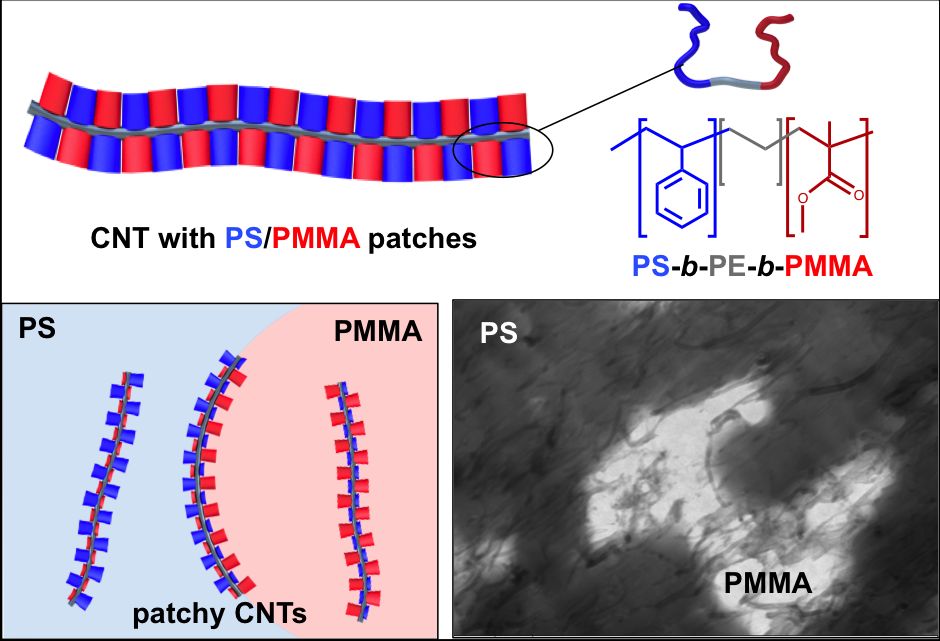News
New Paper: "“Patchy” Carbon Nanotubes as Efficient Compatibilizers for Polymer Blends"
11.02.2016
"“Patchy” Carbon Nanotubes as Efficient Compatibilizers for Polymer Blends"
Gegenhuber, T.; Krekhova, M.; Schöbel, J.; Gröschel, A. H.; Schmalz, H. ACS Macro Letters 2016, 5(3), 306-310.

Surface-modified carbon nanotubes (CNTs) have become well-established filler materials for polymer nanocomposites. However, in immiscible polymer blends the CNT-coating is selective toward the more compatible phase, which suppresses their homogeneous distribution and limits harnessing the full potential of the filler. In this study, we show that multi-walled CNTs with a patchy polystyrene/poly(methyl methacrylate) (PS/PMMA) corona disperse equally well in both phases of an incompatible PS/PMMA polymer blend. Unlike polymer-grafted CNTs with a uniform corona, the patchy CNTs are able to adjust their corona structure to the blend phases by selective swelling/collapse of respective miscible/immiscible surface patches. Importantly, the high interfacial activity of patchy CNTs further causes a significant decrease in PMMA droplet size with increasing filler content. The combined effect of compatibilization and homogeneous distribution makes patchy CNTs interesting materials for polymer blend nanocomposites, where next to the compatibilization a homogenous filler distribution is important to gain the desired materials property (e.g. reinforcement).

